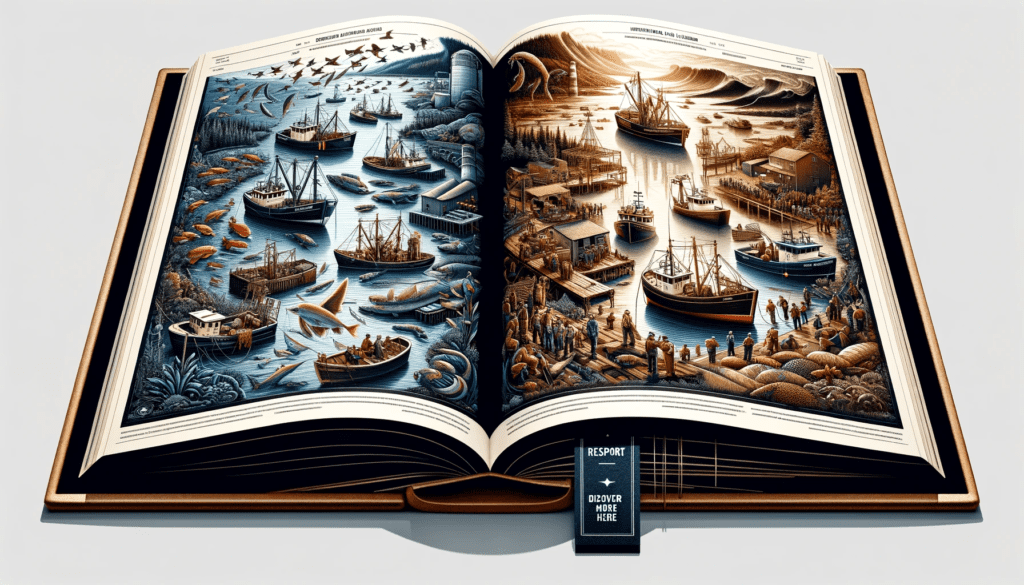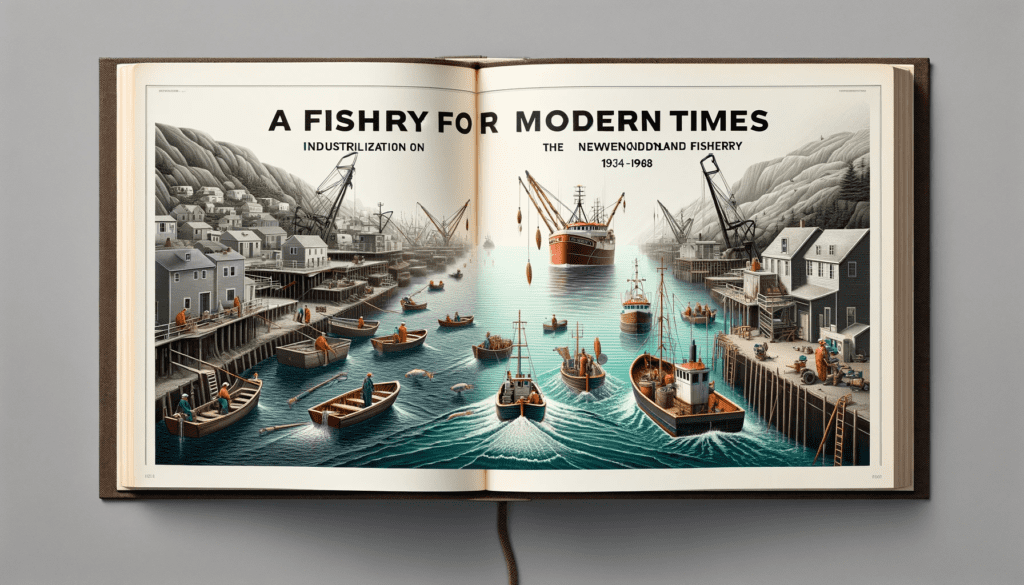Introduction: The Turning Tide of the Newfoundland Fishery
The Newfoundland fishery has experienced a tumultuous path, grappling with the difficulties of overfishing. This adversity has catalyzed a transformative move towards sustainable development.
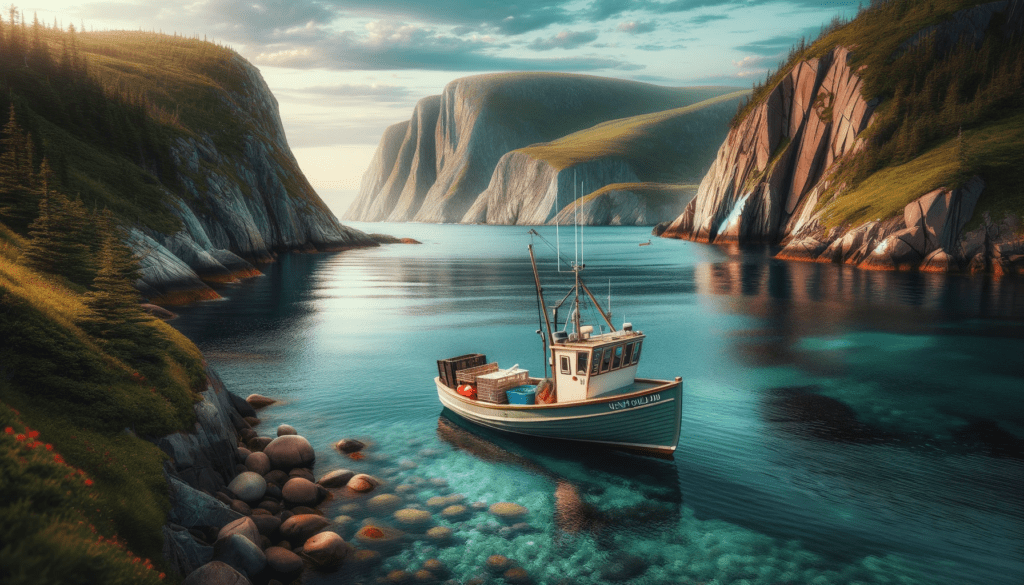
Tracing the Roots of Over-fishing
- Who: Key players in the overfishing crisis were mainly industrial fishing entities, which included large-scale commercial fleets and international corporations.
- What: This era witnessed an alarming escalation of overfishing, primarily driven by aggressive harvesting techniques and a relentless pursuit of profit.
- Where: The critical impact was felt in the prosperous yet vulnerable waters surrounding Newfoundland, a region known for its bountiful fish stocks.
- When: The late 20th century marked a pivotal period, with overfishing reaching unsustainable levels, causing widespread concern.
- Why: Two main culprits fuelled this crisis: unregulated fishing practices and rapid technological advances in fishing equipment, which led to unprecedented extraction rates.
This exploration sets the stage for understanding the profound impact over fishing had on Newfoundland’s fishery. It highlights the urgency driving the shift to sustainable practices, vital for fish stock survival. These changes support the dependent communities’ livelihoods.
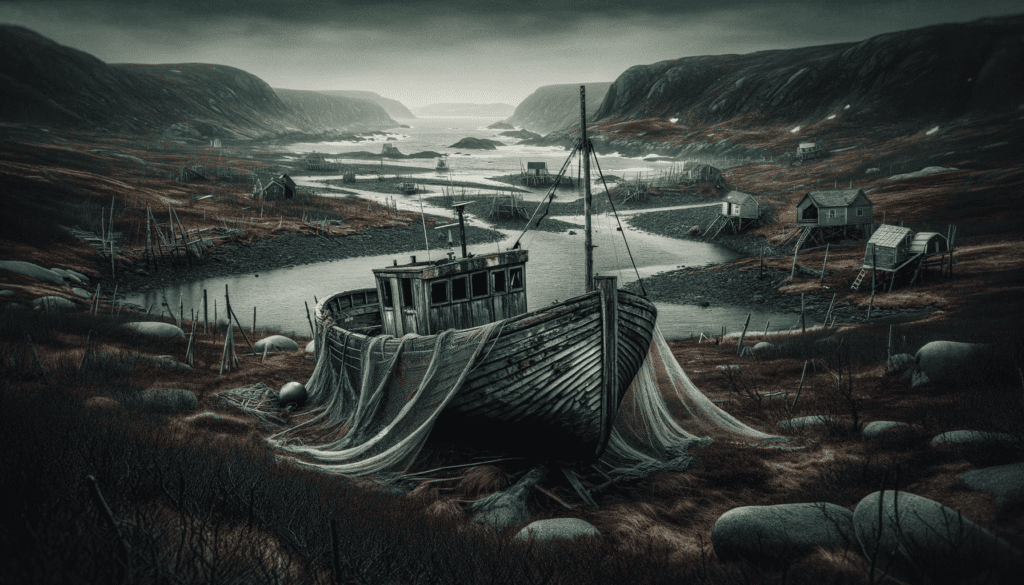
The Local Fishermen’s Plight
This section examines the significant challenges faced by Newfoundland fishermen and their families, a story of loss and resilience. It’s deeply intertwined with the region’s fishing heritage.
The Impact of Over-fishing on Local Communities
- Who: The backbone of this narrative is the Newfoundland fishermen and their families, whose lives have revolved around the fishery for generations.
- What: The over-fishing crisis led to a devastating loss of traditional employment for nearly 30,000 individuals in Newfoundland and Labrador, effectively ending a near 500-year-old industry. This not only represented a loss of jobs but also deeply affected the cultural identity and heritage that had been intertwined with fishing for generations.
- Where: The impact was most acutely felt in the coastal communities of Newfoundland, where fishing was not just a job but a cultural cornerstone.
- When: This decline in livelihood coincided with the dwindling fish stocks, especially during the critical period of the late 20th century.
- Why: The primary reason for this upheaval was the over exploitation of fish stocks due to unregulated fishing practices and technological advancements.
This plight marked a turning point, highlighting the urgent need for sustainable practices. It vividly depicts the harsh realities encountered in Newfoundland’s fishery, setting the stage. This paves the way for a transformative journey toward sustainable development.
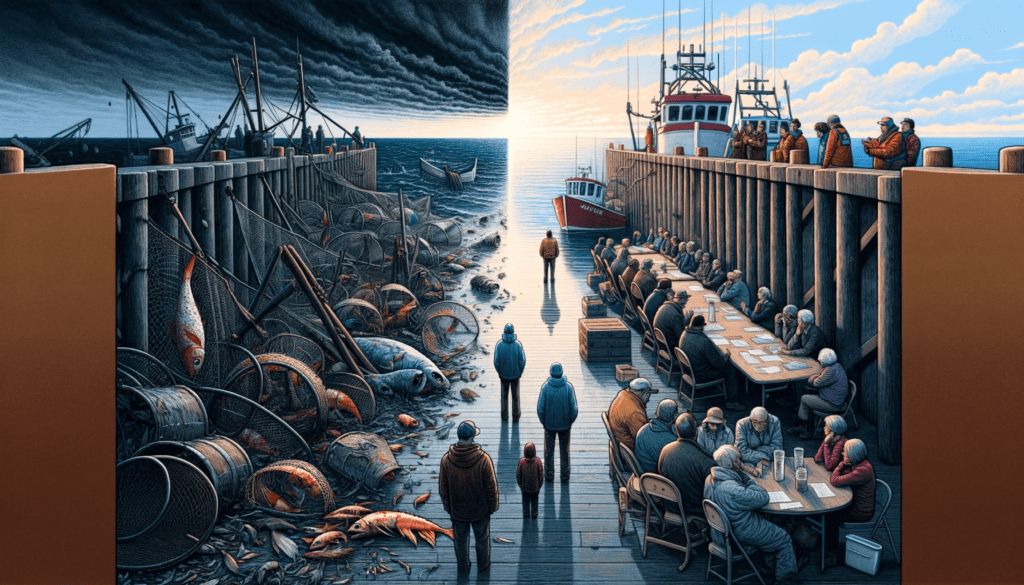
The Fallout and Response to the Crisis
This segment delves into the crucial response to overfishing, focusing on protective measures for Newfoundland fisheries. It aims to secure the future of these communities.
- Who: At the forefront were the local fishermen grappling with new realities and regulatory bodies tasked with managing the crisis.
- What: They implemented stringent regulations and quotas, fundamentally altering fishing practices.
- Where: These changes took effect across the Newfoundland fishing zones, areas once teeming with abundant catches.
- When: This transition occurred in the post-depletion phase, a time of significant reflection and action.
- Why: The primary goal was to conserve the remaining fish stocks, ensuring the fishery’s sustainability for future generations.
This phase marks a pivotal moment in the Newfoundland fishery’s history. It symbolizes a joint effort to balance economic needs with ecological responsibility. This foundation fosters today’s sustainable development in the fishery.
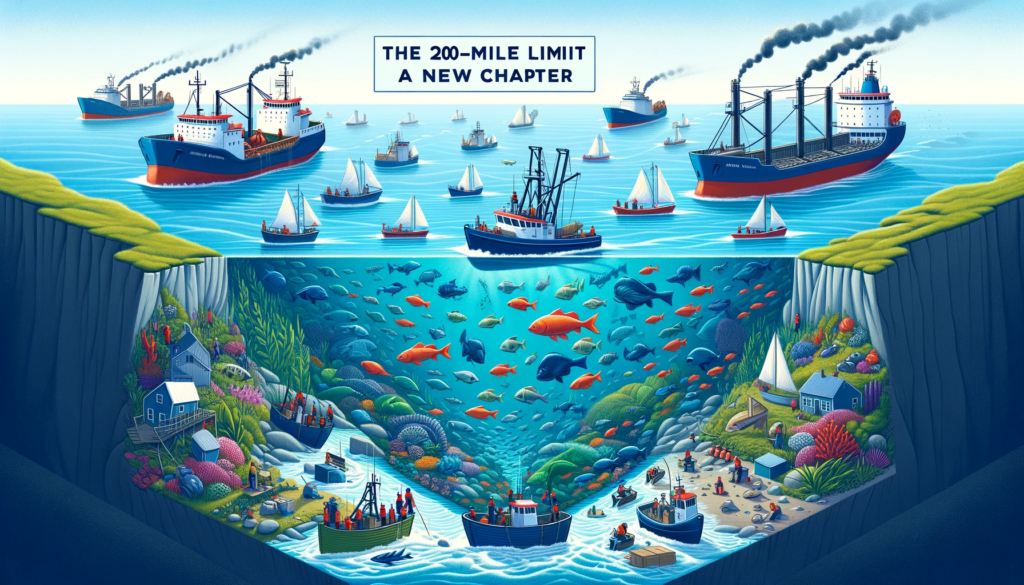
The 200-Mile Limit: A New Chapter
This critical section explores the significant shift in the Newfoundland fishery’s management and its implications for sustainable development.
Establishing the Exclusive Economic Zone
- Who: In collaboration with local fishermen, the Canadian government played a pivotal role in this transformative decision.
- What: Establishing a 200-mile exclusive economic zone (EEZ) marked a new era in fishery management.
- Where: This zone became a protected fishing area 200 miles off the Newfoundland coast.
- When: This landmark decision was made in the late 1970s, a period of global environmental awakening.
- Why: The primary aim was to protect and regenerate local fish stocks, ensuring the fishery’s long-term viability and health.
This strategic move was a turning point, signifying a shift from exploitation to conservation. It established sustainable practices that now define the Newfoundland fishery, emphasizing a commitment. This dedication aims to preserve this vital resource for future generations.
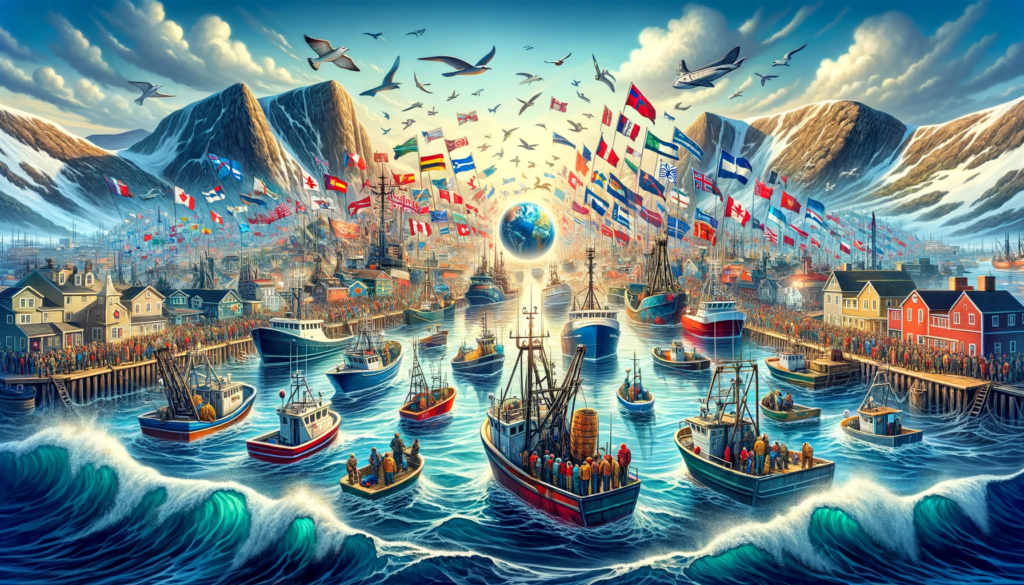
Understanding the Newfoundland Fishery’s Global Stature
This part of the narrative showcases the Newfoundland fishery’s emergence as a global leader in sustainable fishing practices.
- Who: The global fishing community, including environmentalists, policymakers, and industry leaders, are vital observers and participants in this narrative.
- What: They have acknowledged and often celebrated the Newfoundland fishery’s remarkable turnaround and commitment to sustainable practices.
- Where: This recognition has resonated in various international forums, conferences, and environmental discussions, placing Newfoundland on the global map.
- When: The Newfoundland fishery’s efforts have gained significant traction and acknowledgment worldwide in recent years.
- Why: The reason behind this acclaim is the fishery’s transformation into a successful model of sustainable fishing, offering lessons and inspiration for fisheries around the globe.
The Newfoundland fishery’s global stature stands as more than a recovery symbol; it’s a beacon of hope. It shows that positive change is attainable through collective effort, innovation, and unwavering commitment to sustainability.

The Newfoundland Fishery’s Geographical and Temporal Context
This part of our narrative dives into the Newfoundland fishery’s deep historical and geographical roots, a cornerstone of the region’s identity.
Exploring the Historic Depths of the Newfoundland Fishery
- Who: Dedicated fishermen who have braved these waters for centuries and historians who capture the essence of its legacy.
- What: The fishery is not just a source of livelihood but a significant historical chapter, reflecting a rich maritime heritage.
- Where: The fishery has been a pivotal maritime center in the bountiful North Atlantic region.
- When: Its origins trace back to the 16th century, marking it as one of the most enduring commercial fisheries.
- Why: The area’s abundant fishing grounds and the cultural heritage intertwined with them make the fishery historically invaluable.
In ‘The Newfoundland Fishery’s Geographical and Temporal Context,’ the blog post highlights the fishery’s historical and geographical importance. This section of ‘The Newfoundland Fishery: Pioneering Sustainable Development from Lost Livelihoods’ delves into its rich legacy.
It emphasizes the rich maritime heritage and the deep-rooted cultural importance of the fishery in the North Atlantic region, dating back to the 16th century.
This part of the narrative is crucial in providing context to the fishery’s evolution from a period marked by over fishing and hardship to its current status as a model for sustainable fishing practices.
The focus is on connecting the fishery’s past – its longstanding tradition and its impact on generations of fishermen and their communities – to its present efforts in sustainable development, illustrating a journey of resilience and transformation.
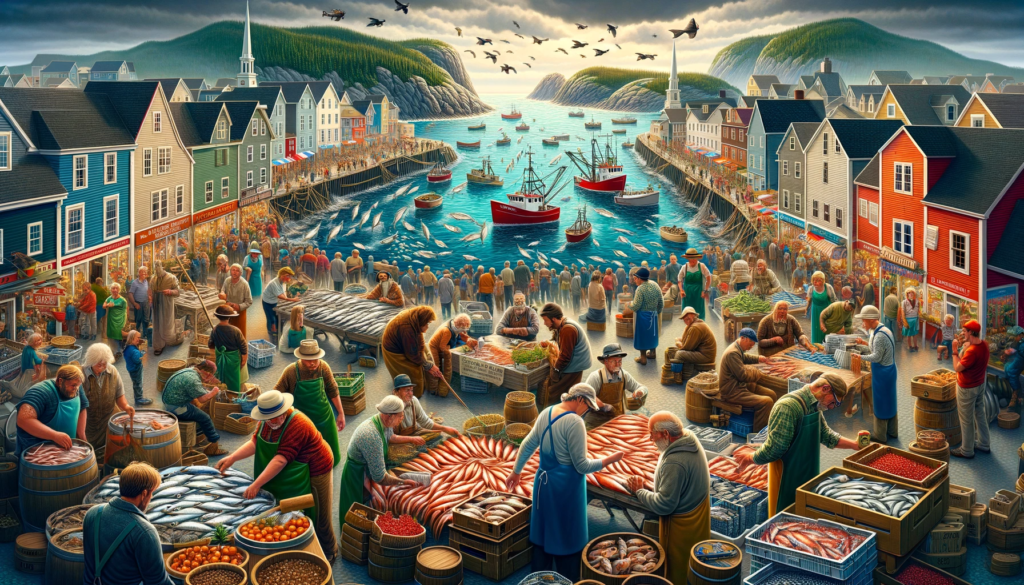
The Fishery’s Broader Importance
In this section, we explore the broader implications of the Newfoundland fishery, underscoring its role in sustainable development and cultural identity.
- Who: Environmentalists and economists alike laud the fishery for its progressive practices and economic resilience.
- What: Beyond its economic contributions, the fishery embodies significant cultural and environmental values.
- Where: Its influence extends from Newfoundland’s shores to international waters, setting a precedent in sustainable practices.
- When: This is not just historical; its relevance continues to grow in the present and shapes future fishing norms.
- Why: The fishery is a prime example of sustainable development, balancing ecological health and economic stability.
This segment showcases the Newfoundland fishery as more than a local enterprise; it’s a global model for sustainable fishing and a cultural icon.

From the Newfoundland Fishery Library
Dive deeper into the history and evolution of the Newfoundland fishery with these insightful reads:
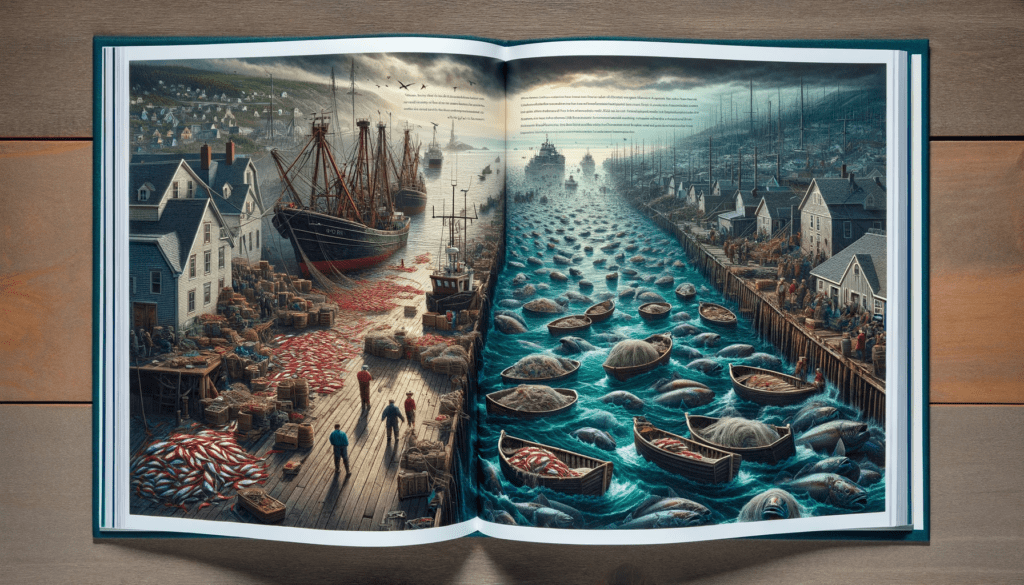
Details of Each Book
- Cod Collapse: The Rise and Fall of Newfoundland’s Saltwater Cowboys: This book offers a compelling narrative of how overfishing led to the dramatic decline of cod populations, impacting Newfoundland’s fishing communities.
- Report on the Newfoundland and Labrador Fisheries: An in-depth analysis providing critical insights into the challenges and changes within the Newfoundland and Labrador fisheries over the years.
- A Fishery for Modern Times: Industrialization of the Newfoundland Fishery, 1934-1968: Explore the transformation of the Newfoundland fishery from traditional methods to modern industrial practices and its implications.
These resources provide insights into the historical context and the socioeconomic impact of fishing practices. They trace Newfoundland’s journey towards sustainable fishing.
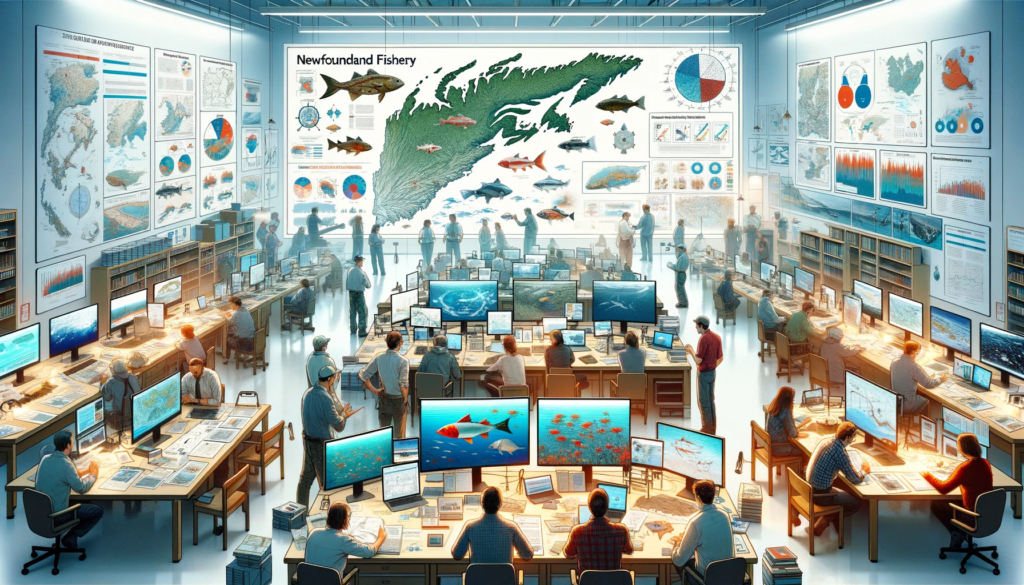
Newfoundland Fishery Resources
Enhance your understanding of the Newfoundland fishery’s journey with these informative resources:
Study on Sustainable Fishing Practices in Newfoundland
The Mitacs study “Increasing Value: How Best to Recognize and Reward Fish Harvesters and Communities in Newfoundland and Labrador for Sustainable Fisheries Practices” examines how local management and governance have evolved towards sustainable development in Newfoundland fisheries.
It aims to identify effective methods to recognize and reward fish harvesters for sustainable practices.
Investing in Sustainable Futures: Modernizing Newfoundland and Labrador’s Fisheries
The study focuses on the significant investment of $25.3 million by the Canadian government and the Province of Newfoundland and Labrador in the fish and seafood sector.
It covers 147 projects aimed at modernizing equipment and practices to enhance quality, productivity, and sustainability.
This initiative includes advancements in harvesting, processing, aquaculture, and indigenous partnerships.
The Atlantic Fisheries Fund, which supports these projects, emphasizes sustainable development, improved competitiveness, and the economic impact of these initiatives on local communities in Newfoundland and Labrador
Evolving Seas: The Transformation of Newfoundland’s Fishing Industry
This section titled “Evolving Seas: The Transformation of Newfoundland’s Fishing Industry” summarizes the historical progression of Newfoundland’s fishing practices.
It details how the industry transitioned from the traditional, family-based salt-cod fishery to a more industrialized approach post-World War II.
This shift brought technological advances, increased efficiency, and ultimately led to overfishing and the depletion of cod stocks by the 1990s.
The industry’s evolution significantly impacted local communities, altering settlement patterns and employment trends as people migrated towards large processing plants.
This comprehensive overview traces the industry’s journey from its early days to the challenges and changes of the modern era.
These resources provide a wealth of information on the transformation of the Newfoundland fishery, offering perspectives on its economic, social, and environmental impacts.
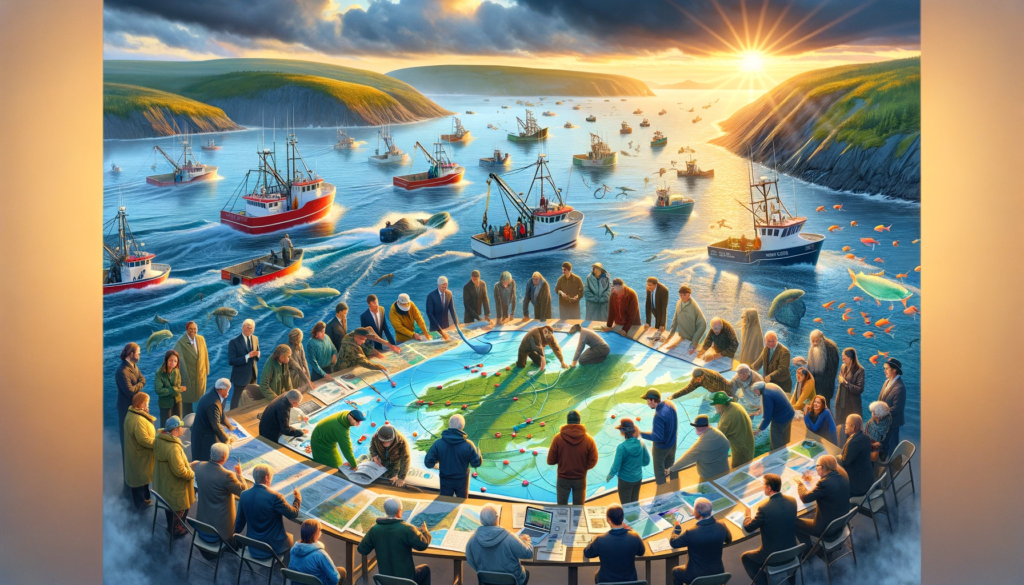
Conclusion: Charting a Sustainable Future for the Newfoundland Fishery
As we look ahead, let’s contemplate the Newfoundland fishery’s path toward a sustainable future, considering the roles, expectations, and impacts.
Envisioning Tomorrow’s Newfoundland Fishery
- Who: Future vital players include a new generation of fishermen, environmental scientists, and policymakers, all dedicated to sustainable practices.
- What: Expectations are high for the fishery to continue as a global model of sustainable fishing, balancing ecological health with economic viability.
- Where: The fishery’s influence will extend beyond Newfoundland, inspiring sustainable practices in fisheries worldwide.
- When: Ongoing and future developments in sustainable fishing are anticipated to evolve continuously, adapting to new challenges and innovations.
- Why: Focusing on sustainability remains crucial to preserving marine ecosystems, supporting local economies, and maintaining cultural heritage.
This conclusion underscores the importance of continued commitment to sustainable practices in the Newfoundland fishery. It’s a journey that benefits the region and sets a global precedent for responsible marine resource management.
Turning the Tide: From Overfishing to Sustainability in the Newfoundland Fishery
Thank you for exploring “The Newfoundland Fishery: Pioneering Sustainable Development from Lost Livelihoods.” We hope it has provided valuable insights into the Newfoundland Fishery. If you found it enlightening, please share it with others who might also be interested!
While you’re here, dive into more engaging content on sunnydaysgo.com:
Warming Up to the Truth: Unveiling the Reality Behind Climate Change Debates
Powerful Clarification | Is Climate Change Real Or Not?: A thought-provoking article addressing the crucial question of climate change’s reality.
Speaking Like a Local: Unpacking Newfoundland’s Quirky Slang and Sayings 🐟📚
Newfoundland Slang Dictionary | Top Sayings of All Time! 🐟📚: Discover the unique and colourful slang of Newfoundland, enriching your language palette.
Escape to Nature: Your Guide to Booking at Beaver Lake Provincial Recreation Area
Beaver Lake Provincial Recreation Area Book Now!: Plan your next adventure at Beaver Lake Provincial Recreation Area.
Cyclocross 101: The Essential Guide for Beginners
Getting Started with Cyclocross: Ultimate Beginner’s Guide: Everything you need to know to embark on your cyclocross journey.
Harnessing the Breeze: The Intricacies of Wind Turbine Technology and Renewable Energy
How Does a Wind Turbine Generate Electricity?: Unravel the fascinating process behind wind turbines and renewable energy.
Explore these articles for more intriguing reads!
